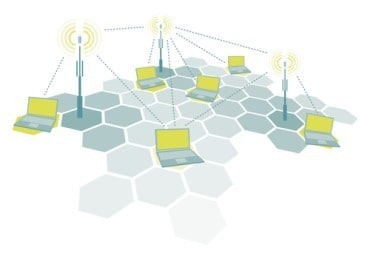
From a business perspective, IIoT projects can trigger serious challenges in any organization. Here are some things to consider as you build your solution.
As the Internet of Things begins to hit its stride, Industrial IoT also continues to gain momentum and market adoption.
The opportunities for IIoT to provide business benefits are scaling massively right now. The ultimate aim in any IIoT initiative is to unify every “thing” – solutions, enterprises, or customers – under a common infrastructure.
See also: Gartner says IIoT space ready to explode, but security issues scare us
The maturation and adoption of IIoT is great news, but like anything new, questions and needs can surface. What will be the effect of IIoT on the environment, on society or on the economy? The next few years of market adoption will tell the tale. From a business perspective integration of IIoT solutions can trigger some serious challenges:
Service oriented architecture design
When working with a large data pool, scalability can be challenging at different levels. Implementing data transfer and networking operations, data processing and management, and service provisioning all can pose pain points at the outset of their initiatives.
Similarly, taking into account other network constraints, it is challenging to develop networking technologies and standards that allow data to be gathered by a large number of devices in order to move efficiently within IoT networks. Common infrastructure ensures control of the things around us.
Managing connected things (consumer/enterprise) in terms of facilitating the collaboration between different entities and administering devices, addressing, identification, and optimization at the architectural and protocol levels, is a research challenge.
Integration of IT and OT systems
The ultimate aim for IoT is to transform real-world objects into intelligent virtual objects. Various IoT standards (security, communication, and identification standards) are the key enablers for the integration and spread of IoT technologies. They need to be designed to embrace emerging technologies, taking into account specific issues in IoT standardization including interoperability, radio access level, semantic interoperability, security and privacy.
Data maturity and the data landscape
Data landscape and its maturity are also important considerations. The quantity, quality, and granularity of data affects adoption. The best IIoT initiatives ensure the ability to handle large volumes of data and making it reusable, is a critical consideration in an IIoT initiative.
Hidden technical debt can also reveal itself in an IIoT initiative. New jobs are created by IIoT but they require an emerging skill set to administer the automated systems. This debt affects the system or code levels. The good news is developing and deploying IIoT is still relatively fast and cost-effective compared to maintenance. Abstraction boundaries are not strict – as it is data dependent.
“Changing anything changes everything”
Changing anything changes everything applies in IIoT. Change not only affects input signals, but also hyper-parameters, learning settings, sampling methods, convergence thresholds, data selection, and essentially every other possible tweak that might be under consideration.
Security
Infosecurity and privacy protection is always a business imperative. It is important to define what security and privacy means from a business’ social, legal, and cultural viewpoints when fleshing out an IIoT plan. Ensuring that security, specifically, end-to-end encryption is up to date and in force for both services and applications is an absolute must do.
Lack of technical “know-how”
Solutions lie in the hands of the technological implementors and not in the technology. Experts who implement the technology are the people who set the initial momentum for the technological revolution. And the learning curve is taking place right now. IoT and IIoT are not just about “things,” they are about the bringing together domains involved – programming and big data, sensors and devices,
The opportunities for IIoT are growing, and a burgeoning market means early adopters will reap the rewards and work out some of the bugs of the early installations and experience the ripple effect that comes with new technological adoption. With a little planning and knowledge of what to look for, IIoT initiatives will skyrocket as they are optimized and made available.





























